On the outside, John P. Stevens High looks much like any other public school in America. As buses pull up to the squat brick building, students with backpacks trundle into the morning light, the air ringing with the sound of their caffeinated chatter while they collect their friends and move in packs toward the entrance. It’s only when they step through the steel doors, beneath the hand-painted mural reading, “Enter to Learn, Depart to Serve,” that the marvels begin.
Related: To Perform Best in Life, Remember These 6 Ziglar Truths
Across the hall from the principal’s office, on an oak-paneled wall of honor, pictures of esteemed alumni beam down on the teens as they hustle off to their lockers. The names on the plaques include Mark Polansky, commander of the December 2006 space shuttle mission to the International Space Station; David Bryan, keyboardist for the band Bon Jovi; Athena Varounis, the FBI special agent who inspired the creation of Jodie Foster’s character in The Silence of the Lambs; and Nancy Shevell, vice president in charge of administration for New England Motor Freight, who is perhaps more widely known as the wife of Sir Paul McCartney.
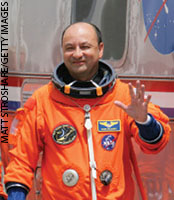
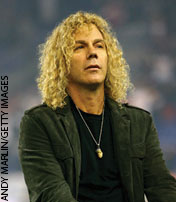
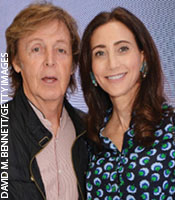
In the 51 years since it opened its classrooms to residents of Edison, New Jersey, the school has earned a reputation as a music powerhouse. Band director Andrew DeNicola—one of 10 finalists for the 2014 Grammy Music Educator Award—has mentored not only Bryan, but also Billy Joel keyboardist David Rosenthal and Late Night with David Letterman trumpet player Al Cheznovitz. John P. Stevens’ Model U.N. program also ranks among the nation’s finest, claiming awards for best large delegation at four conferences in the last five years. And the institution routinely sends scholars to Ivy League universities. In 2015 U.S. News & World Report ranked it 38th among New Jersey’s 416 high schools.
But lately John P. Stevens has been making news as an incubator for blue-chip business leaders. As CNN reported in August, graduates Chieh Huang (Class of ’99), Matt Salzberg (’01) and Ken Chen (’01) were instrumental in launching companies now collectively valued at more than $2 billion. Huang serves as CEO of Boxed, an e-commerce rival to the packaged goods purveyors Sam’s Club and Costco. Salzberg is CEO of Blue Apron, which delivers 5 million meal kits—complete with original recipes and farm fresh ingredients—to family chefs nationwide each month. And Chen is a co-founder and one-time chief marketing officer of NatureBox, a subscription service that supplies consumers with healthy snacks tailored to their specific tastes and diet requirements.
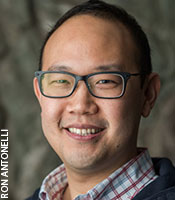
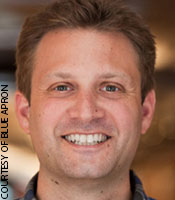
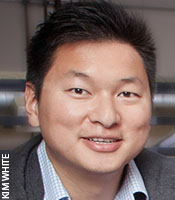
With talent like that roaming the halls, it’s hard not to wonder what sort of magic springs from the school’s water fountains. But there’s no supernatural potion, no wizard, no sacred ritual that converts Edison’s teens into business titans. When you ask John P. Stevens’ graduates and instructors for an explanation, the one word that comes up time and again is competitive.
“The kids have the desire to succeed and be noticed,” says principal Gail Pawlikowski. “They don’t want to settle for No. 2, No. 3 and definitely not No. 4. They want to be No. 1 and will push themselves.”
Related: 6 Qualities of Wildly Successful People
Striving for success is part of the culture—so much so that Pawlikowski and her teaching staff occasionally have to ask pupils (and parents) to dial down their ambitions. Being the drum major in the band is cool. Being the drum major, a straight-A student and vice president of the student council is a recipe for early burnout.
The upshot? In the 17 years since Huang, Salzberg and Chen graduated from John P. Stevens, the school’s enterprising students have continued to demonstrate a knack for innovation. One created a nutrition app for Michelle Obama’s Let’s Move! campaign. Three others launched a company that makes coffee tables from recycled cardboard. And, after reading about the Costa Concordia cruise ship disaster, a third group designed a full-body neoprene life jacket equipped with a bacteria-powered battery, location beacon and water purification system—with help from the Massachusetts Institute of Technology (financial support), Rutgers University (technical expertise/testing) and the Fashion Institute of Technology (stitching).
“They don’t want to settle for No. 2, No. 3 and definitely not No. 4. They want to be No. 1 and will push themselves.”
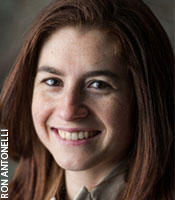 Two years ago, Elana Reinholtz, a 2007 graduate, took a one-month vacation from her financial services job at Bloomberg L.P. to do volunteer work in Kenya. She spent the time teaching widows the principles of accounting so they could make the most of their microloans ($100-$250) from the SiSi Fund, created by the poverty-fighting nonprofit Common Ground for Africa. “It was my moment of purpose. It changed my whole life. I knew right then I wanted to help those women. I came back to the States and said, ‘I can’t live in Kenya, but I’m going to fund this organization with the sale of jewelry.’ ”
Two years ago, Elana Reinholtz, a 2007 graduate, took a one-month vacation from her financial services job at Bloomberg L.P. to do volunteer work in Kenya. She spent the time teaching widows the principles of accounting so they could make the most of their microloans ($100-$250) from the SiSi Fund, created by the poverty-fighting nonprofit Common Ground for Africa. “It was my moment of purpose. It changed my whole life. I knew right then I wanted to help those women. I came back to the States and said, ‘I can’t live in Kenya, but I’m going to fund this organization with the sale of jewelry.’ ”
Her leap of faith is not as crazy as it sounds. Reinholtz already had raised the money to pay for her trip by offering her beaded designs to people in her professional networks. Today, the for-profit corporation she founded—Bird + Stone—sells necklaces and bracelets handmade in New York via an online shop and boutiques in New York City, New Jersey and San Francisco. The items retail for $26 to $75, and Reinholtz channels 15 percent of the profits into the SiSi Fund.
The seeds of that personal transformation from employee to founder/CEO were sown at John P. Stevens. “Above all it was the culture that impacted me,” Reinholtz says. “The students set the bar high. There’s a growth mindset: Work harder and you can achieve anything.”
***
The world needs entrepreneurs. They create jobs, unearth new markets, breathe life into the economy, and solve complex problems that threaten our peace and our planet.
In many ways, teenagers and recent college graduates are ideally positioned for startup success. They have a sprawling network of friends with no jobs or commitments, which makes for inexpensive and easy recruiting and hiring. They think nothing of living on the cheap, working day and night, bunking with friends (or friends of friends), and sleeping beneath a desk. If they need to move to Boston or Detroit, they pack the car and go. There’s little need for deliberation. They’re far less risk-averse than adults because they’re unencumbered by health insurance rates, childcare costs and mortgage payments.
According to a recent Gallup poll, four in 10 U.S. students in grades five through 12 say they plan to start a business one day. Yet recent studies suggest that millennials are less likely than their baby-boomer predecessors to follow through on those goals. Hobbled by student loan debt and short on capital and work experience because of the tight job market, many young Americans have had to rethink their visions of the future.
That stagnation concerns some business leaders. Ronald Perelman, CEO and chairman of MacAndrews & Forbes, recently committed $100 million to Columbia Business School to teach the next generation how to become entrepreneurs. Sam Zell, chairman of Equity Group Investments, contributed $60 million to the University of Michigan for the same reason. James R. Swartz, founding partner of the venture capital firm Accel, gave $31 million to support entrepreneurship activities at Carnegie Mellon University in Pittsburgh. Kevin Plank, founder of Under Armour, donated $16 million to his Maryland high school with the understanding that part of it would go toward creating the Entrepreneurial Center for Innovation and Leadership there.
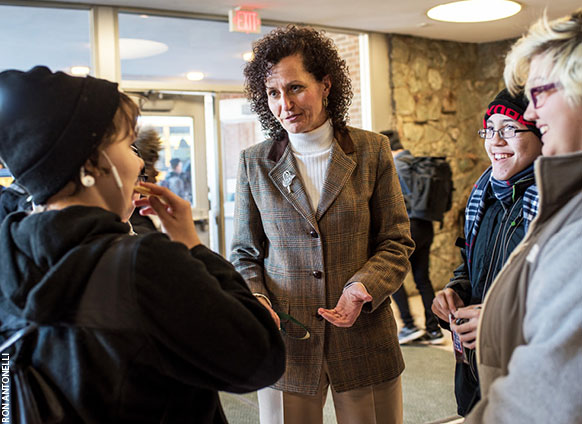
The question is: How do you create an entrepreneur? How do you impart skills like ingenuity, passion, persistence and comfort with risk? It’s not like teaching someone how to cater a meal, code an app or remove a gallbladder. It requires an odd, constantly evolving mix of talents.
Related: 7 Entrepreneurial Traits to Teach Your Child
If you wish to be the next Elon Musk, for example, you’re facing mighty long odds. In fact, you might just as well set your sights on becoming the next Michael Jordan. Scott Shane, a professor of entrepreneurial studies at Case Western Reserve University, once studied the entrepreneurial activity of same-sex twins—870 pairs of identical twins and 857 pairs of fraternal twins—to determine how much of the entrepreneur’s skill set is tied to genetics. In the end, he concluded that a full 40 percent of that talent is inherited, meaning a hefty 60 percent can be acquired through hard work and study.
“Our goal is to get them to think crticially. The focus is on ‘What does this have to do with you now?'”
“Pieces of this are purely technical, and they can be taught,” Shane says. “If you can’t play scales, you’re not going to be a professional musician. If you can’t catch a football, you’re not joining the NFL. There’s also the training and coaching people get at an elite level. If you assist those at the margin, you can help them.
“And then there’s the part present in people with a gift. We don’t know how to train for that at all.”
Demand for entrepreneurship instruction on college campuses has never been higher. Between 1985 and 2008, the number of courses devoted to the subject has increased twentyfold—from roughly 250 to more than 5,000—according to the Kauffman Foundation. And close to one-third of all business incubators are now located at universities.
In fact, the interest in startups is so profound that investors are rushing to corral the would-be titans before they leave school. Peter Thiel, who co-founded PayPal with Musk and Max Levchin, has tried to lure them away from their studies with his coveted two-year, $100,000 fellowships, and he’s hardly alone in his zeal to fund the business leaders of tomorrow. “At a certain point, they can’t get much younger, or we’re going to be invested in preschool,” Marc Andreessen of the famed venture capital firm Andreessen-Horowitz quipped to Reuters in 2012.
So how do you bestow that enterprising spirit on high school students?
Kim Smith of the international nonprofit Network for Teaching Entrepreneurship says it’s just a matter of opening their eyes to the possibilities. “Instead of seeing problems, see opportunity,” she explains. “That’s the foundation of being an entrepreneur.”
***
Edison, New Jersey, is, of course, named after Thomas Edison, who in 1876 moved his wife and firstborn son to this then-unmarked railway stop 31 miles southwest of New York City. At the time, the landscape was mostly wilderness. The Edison home was located on a failed real estate development. Beyond the neighboring houses, there was little more than a saloon.
Before he left, though, Edison had transformed the place into a land of wonder, birthplace of his Menlo Park lab, the phonograph, the incandescent lightbulb and scores of other inventions.
That pioneering spirit remains today, but Edison would be amazed by what has become of his backwoods hamlet. Today the township, which bills itself as the birthplace of the tech revolution, houses more than 100,000 residents—with more than a third of them born in faraway lands. The residential streets and commercial strips bustle with families from India, Korea, China, Pakistan, Russia and dozens of other locales, and the halls of John P. Stevens High reflect that diversity. A teacher says the cafeteria walls once displayed 130 different flags to represent the student body’s roots through the decades.
In other words, the institution is deeply tied to the immigrant experience. Many of the community’s parents came to the United States in search of a better life, and they value education. They expect their children to take full advantage of it—not simply in the classroom, but also in the gymnasium, computer labs, art studios, woodshop and music facilities. The depth of their commitment is evident in the soundproof booths behind the orchestra pit, the laptops in the chemistry labs, the shiny new greenhouse in the center courtyard. Median household income in Edison is nearly $93,000, and a significant portion of that money is clearly earmarked for elevating the town’s youth.
Those sacrifices are not lost on the students. When they see the success of their neighbors, discover that they themselves are capable of making an impact beyond the school and beyond the Edison community, it encourages them to work harder still. That in turn energizes the teachers. It’s not uncommon to find faculty members’ cars still parked outside the building at 8 p.m., Pawlikowski says. Or teachers volunteering to chaperone field trips, even in the summer.
Now 34, Huang is a prime example of what that kind of support can do for a kid. His parents moved to America from Taiwan. His mother—a teacher in her native land—worked for years as a cashier at a Chinese fast-food restaurant. His father, hampered by the language barrier, struggled to find a job, so he sold items such as stationery and sporting goods on weekends.
After their son graduated from John P. Stevens in 1999, he pressed on to earn degrees from Johns Hopkins University in Baltimore and Fordham Law School in Manhattan. Then he launched the mobile gaming company Astro Ape and sold it to Zynga. And then, in 2013, inspired by years of childhood trips with his parents to a warehouse club in Edison, Huang started Boxed, which raised $100 million in funding in January.
Three high school classmates joined him in the venture. They launched the business from his boyhood home. The family garage served as the firm’s first fulfillment center. Today a Boxed fulfillment center and company offices are just a few miles away.
When asked how a public high school can cultivate such ambitions, Huang can’t resist cracking a joke. “Maybe it was just the cafeteria food,” he says. (Boxed, Blue Apron and NatureBox are all in the business of feeding people.) In a more insightful moment, he notes that he, Salzberg and Chen all took an advanced-placement history class from Jonathan Miller, a teacher known for engaging students in wide-ranging debates over current events.
“One of the enduring memories for me was learning that government and history are often changed by individuals with a simple idea,” Huang says. “Some of the biggest ideas are actually very simple.”
Related: 9 Things I Learned from Talking to 9 Millionaires
In fact, when you watch the spirited Miller work with his students, it’s easy to see why he had such a profound effect on the budding CEO. He clearly loves his job. A few years back, he left the classroom to work as a district supervisor, but missed being with—and molding—teenagers. He marvels at not just their intelligence but also their maturity. “With the race to get into the top colleges, you need to have a résumé built. They get that.”
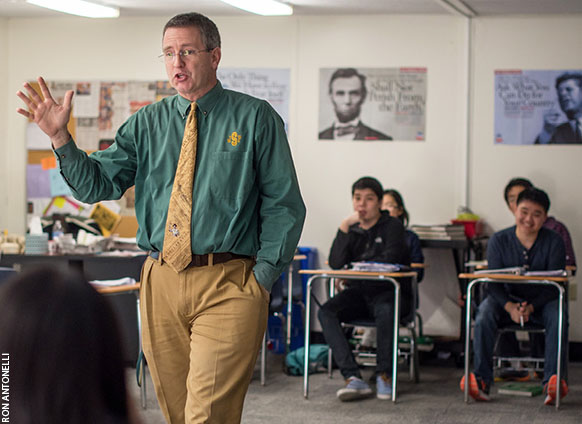
In a nod to the furious pace of change in today’s world, Miller also concedes that many of the jobs he’s preparing these kids for don’t yet exist. “In the future, the workplace is going to be more about communication and collaboration than sitting alone in a cubicle.” Miller and his colleagues challenge their students to come up with creative ideas, and then the teachers and administrators do everything in their power to help them develop those ideas. At the end of the day, the education process is less about taking notes and more about taking action.
“We don’t want to ask them to name 10 facts about what happened during World War II,” Pawlikowski says. “Our goal is to get them to think critically. The focus is on ‘What does this have to do with you now? Why are you learning this? Why do you need this?’ ”
In a school of 2,200 students, you might expect some kids to be overlooked, but John P. Stevens has an antidote for that. Miller calls it the “schools within the school.” He’s referring to the music and theater programs, the varsity sports teams, and other after-school activities. The list of options is astonishing: Improv Theater, Future Business Leaders of America, Robotics, Environmental Club, Chem Club, Muslim Student Association, National Science Honor Society and the Hindi Honor Society, to name a few. “There’s a home for everyone,” Miller says.
The standards for those programs are just as high as they are for academics, which is why the biggest challenge for Pawlikowski and her staff is often managing expectations. “No. 1 is not what’s really important,” she says. “If that’s the end result, that’s great. But in order to get that, you have to work hard. You’re not going to cut corners; you’re not going to cheat; you’re not going to be cutthroat. Can I promise we don’t have that every once in a while? No. But we make sure we emphasize character all the time.”
And maybe that explains Chen’s push to supply America with healthier snacks. And Reinholtz’s efforts to improve the lives of Kenya’s widows. Both saw a problem and found a way to create a business plan that let them offer a solution.
Huang began paying it forward last August. After looking closely at the people in his warehouses—hard workers with fewer advantages than he had—he offered to fund four years of college tuition out of his own pocket for the children of his 100 employees.
“If we do well, I want everyone to do well,” he says.
Related: Do You Have What It Takes to Be an Entrepreneur?
This article appears in the April 2016 issue of SUCCESS magazine.






